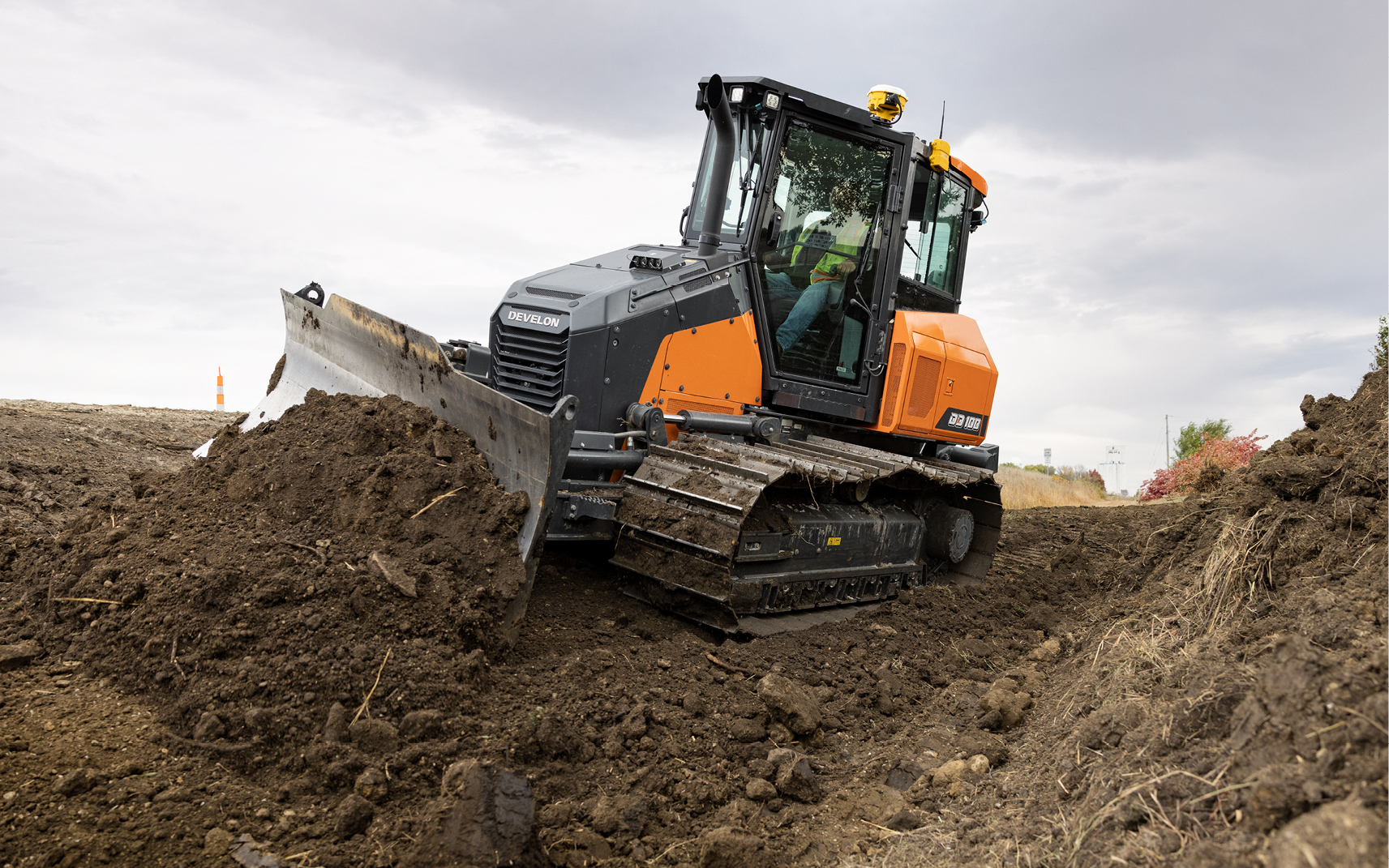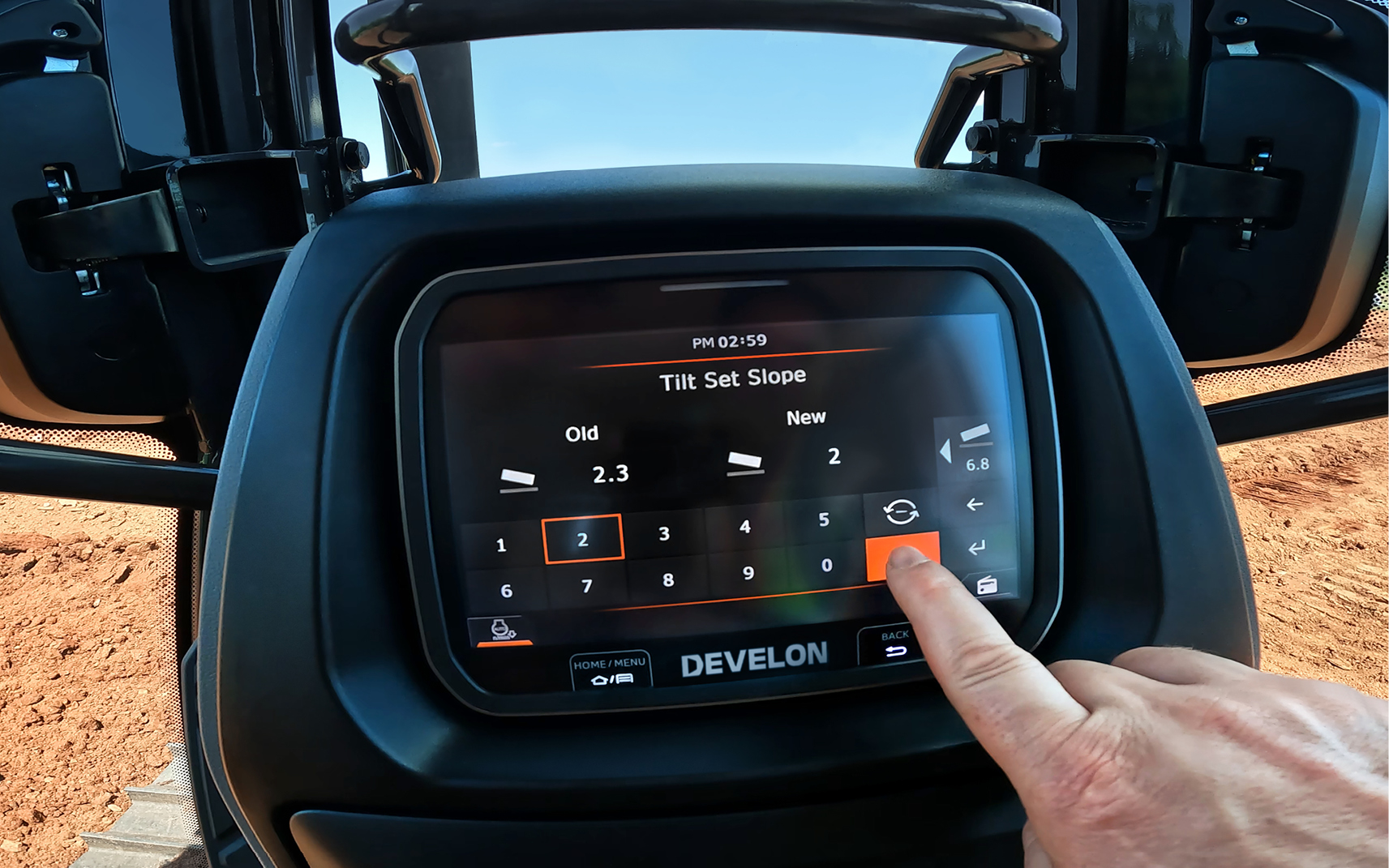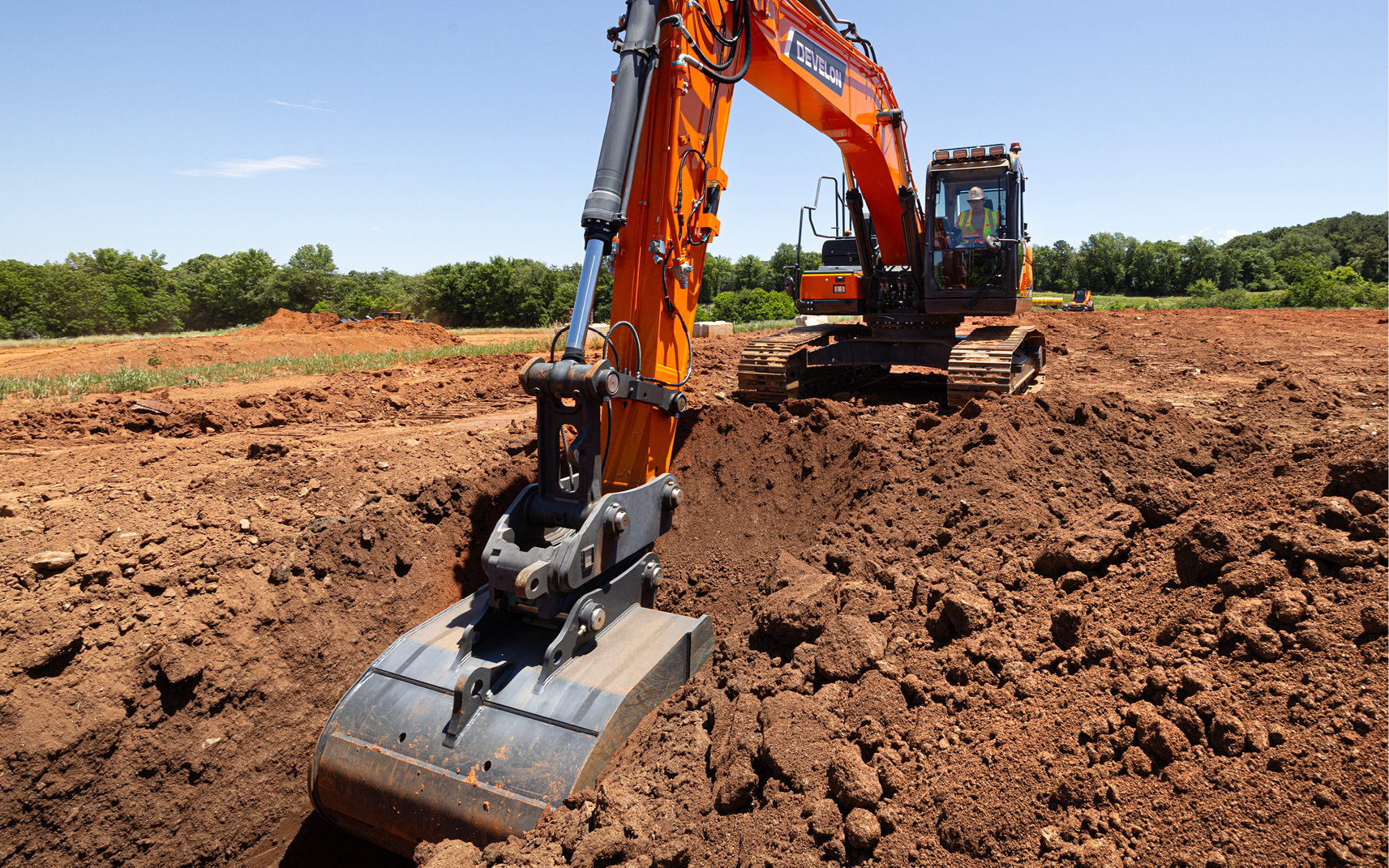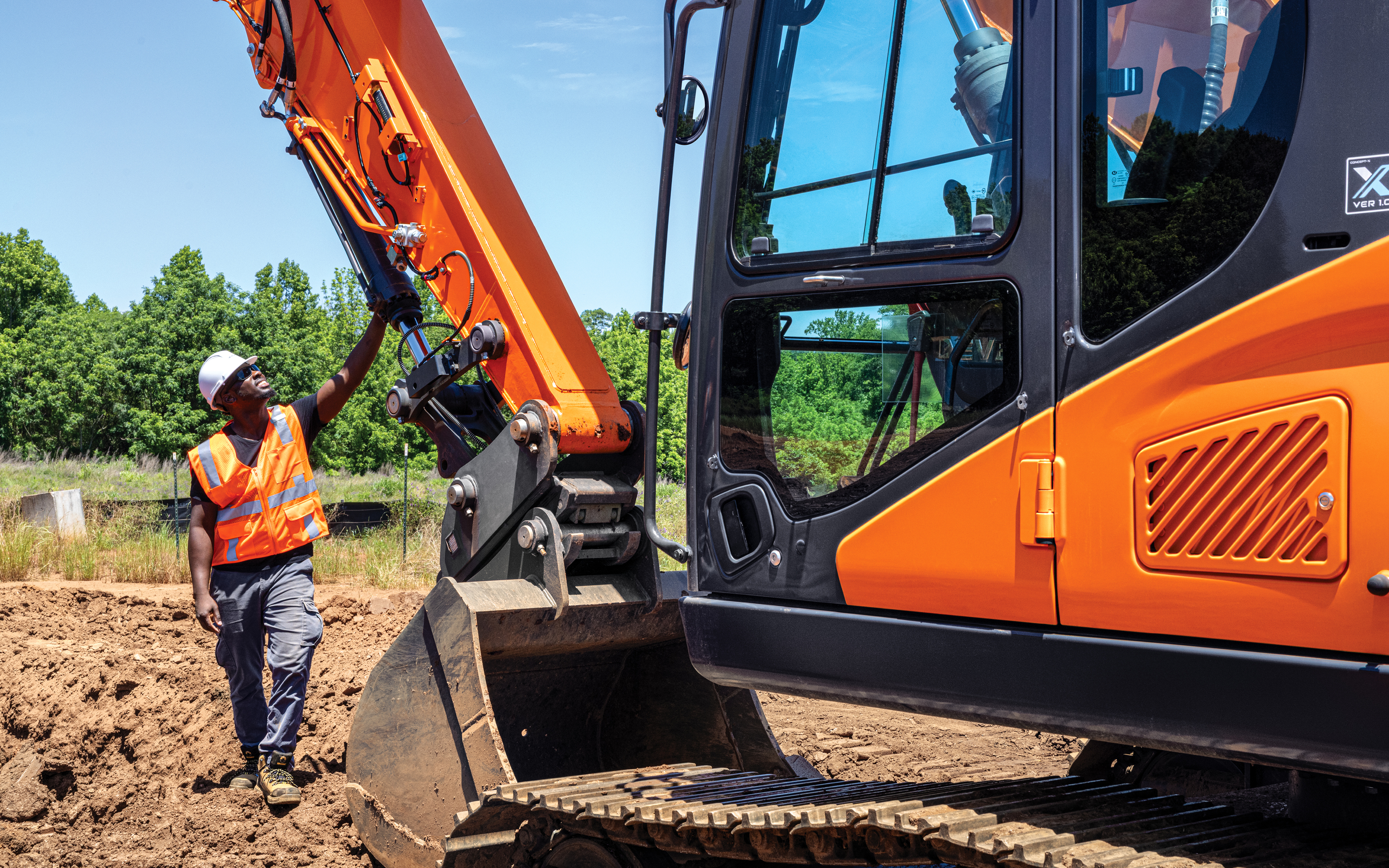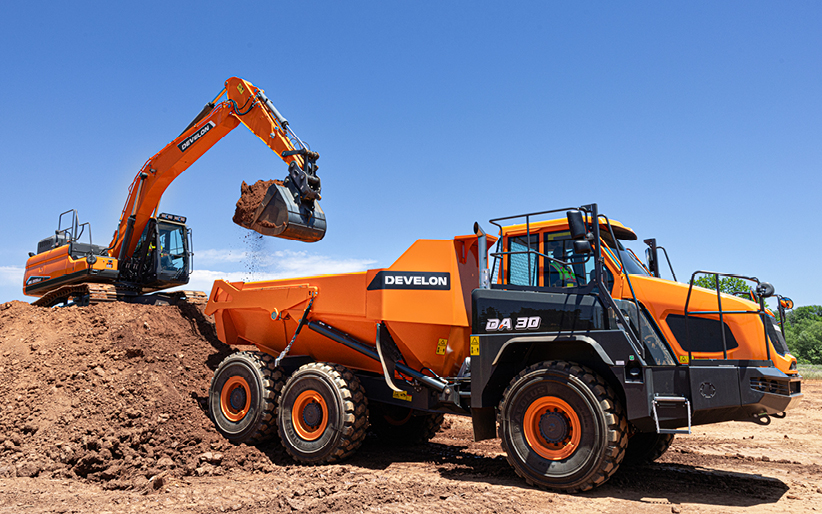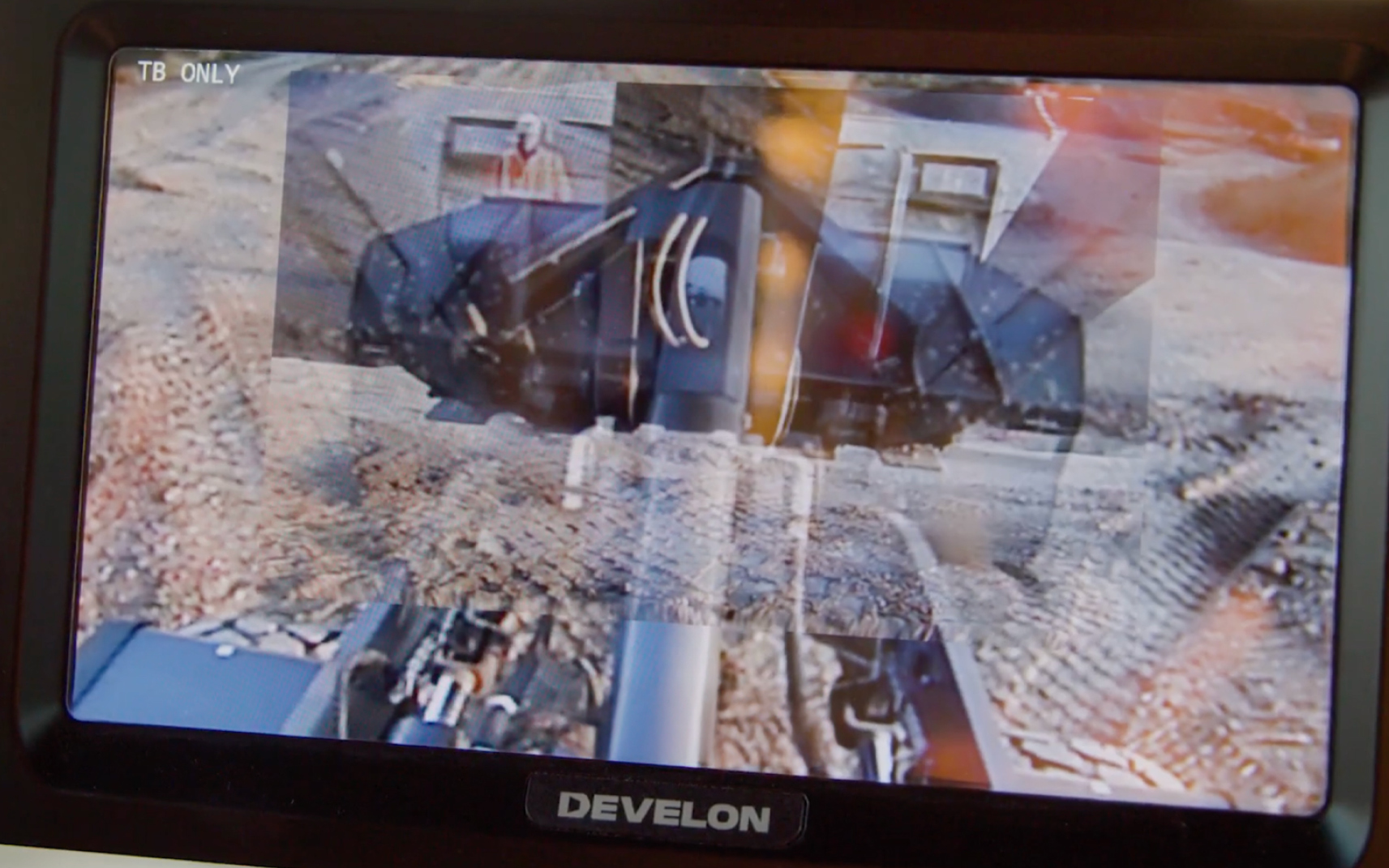In construction, time is money and accuracy is non-negotiable. That’s why many contractors are now implementing 2D and 3D grading technology in their equipment.
These grade control systems boost job site efficiency, improve operator consistency, enhance safety by reducing the need for workers near machines and promote superior project management.
Jeff Lounsbury, of Lounsbury Excavating in Michigan, has utilized machine control systems on their job sites for nearly 20 years. He highlights the dual benefit of grading systems for their dozers.
“It’s time-saving and accurate, and it’s completely changed the way we work,” he says.
Here’s how 2D and 3D grade control systems are revolutionizing job site efficiency.
What Is a 2D Grading System and How Does It Work?
A two-dimensional (2D) grading system uses a fixed reference point or surface to achieve a desired grade. This reference can be a laser beam, often detected by a laser receiver mounted on the equipment, a string line stretched between two points or an existing surface.
A 2D guidance system may already be factory-installed on your equipment and is the ideal setup when you need to achieve a general depth and slope. This includes tasks like:
- Grading a road using grader blades
- Leveling a job site
- Creating a flat pad
- Trenching
- Performing basic slope work
This kind of 2D machine control is ideal for basic grading tasks. The system offers improved accuracy compared to older, manual grading methods.
The 2D systems allow dozer operators to work off a single plane — whether it’s flat, single-slope or dual-slope. Operators rely on the system to make sure the dozer blade is at the correct height and angle for the task. This simplicity can make 2D systems easier to learn, especially for newer equipment operators.
Advanced machine guidance and machine control systems are also available for crawler excavators, such as the DEVELON DX225LC-7X. The DX225LC-7X is equipped with a 2D excavator grade control system that provides real-time feedback to operators.
Equipped with sensors, a laser reference and an intelligent control system, the excavator’s 2D grade control system delivers real-time guidance to operators. This enables precise machine movement through the electro-hydraulic system. By continuously measuring the position of the boom, arm and bucket relative to a set elevation, the system helps operators maintain accurate depth and slope without overdigging.
David LaRocque, owner of Canadian Exploration Services in Ontario, notes the benefits of the 2D grade control system for his DX225LC-7X excavator.
“That’s exactly why we ordered the machine, to be able to utilize the feature when we’re doing municipal work or a trenching job at a mine,” he says. “It’s nice to be able to set the depth and the angles.”
How 3D Grading Systems Elevate Construction Precision
A three-dimensional (3D) excavator grade control system requires more initial investment and setup as an upgrade. In exchange, it delivers more accurate earthmoving and grading for enhanced performance on complex terrain.
Utilizing a global positioning system (GPS) or other advanced positioning systems, the construction 3D grade management system precisely tracks the dozer’s exact position on the job site, comparing it in real time to a digital model of the project.
Contractors like Jeff use a total station to establish precise control points on a job site. He and his operators use the control points to calibrate and verify the grade control system on the machinery.
“When the site is set up for Topcon GPS, a surveyor comes out and sets a grouping of control points around the site,” he explains. “The 3D grade control system takes any guesswork out of the old, labor-intensive method of staking.”
The total station reduces material waste and eliminates the conventional staking previously done by surveyors.
3D systems are typically used for more complex grading projects where a high level of precision is essential:
- Road and highway construction
- Site developments with varying elevations
- Golf course construction
- Large earthmoving projects with tight tolerances
3D machine control systems are indispensable for construction companies like Rasch Construction in Iowa.
“To be able to put a full job site in a machine, so you know where you’re at on the site and your cut/fills, that’s the best way to attack a dirt job,” says owner Dalton Rasch.
A monitor inside the dozer cab provides real-time information to the operator. This information includes:
- Actual grade
- Alarms and warnings
- Cut/fill information
- Cross-section views
- Design data
- Data logging
- Guidance lines
- Machine control software
- Machine parameters
- Machine position
- Status indicators
While this may sound intimidating to some dozer operators, Jeff says the technology’s ease of use is a key selling point: “If you can use a smartphone, you can use this system.”
2D vs. 3D Grading: Key Differences Explained
Both 2D and 3D grade control systems have transformed traditional earthmoving into advanced, high-precision work. This table can help you decide which grade management system is your best option.
| Feature | 2D | 3D |
| Reference method | Fixed | Digital model |
| Complexity of tasks | Simpler | Complex |
| Accuracy level | Good | Excellent |
| Initial cost | Lower | Higher |
| Setup and operation | Simpler | Advanced |
| Reliance on site infrastructure | Higher (lasers) | Lower (GPS) |
When to Upgrade: Choosing the Right Grading System for Your Job
Thinking about upgrading from a factory-installed 2D to an upgraded or aftermarket 3D grade control system? Choose from Topcon, Trimble or Leica for your construction technology needs.
Key questions to consider before upgrading to 3D grade control:
- How frequently are you performing complex grading projects?
- Do you routinely face tight project deadlines and have an increased need for efficiency?
- Is your current grading system producing significant material waste?
- Are high surveying costs an issue, and do you desire to reduce them?
- Are projects becoming more sophisticated, and do you have a need for seamless integration with design files?
DEVELON dozers come standard with 2D grade control with 3D machine guidance and 3D machine control available as an optional upgrade. Ready to see what’s best for you? Schedule a demo with your local dealer.
Top Benefits of Automated Grading for Contractors
To summarize the benefits of machine control systems, this technology:
- Eliminates traditional staking, manual grade checking and guesswork.
- Provides unparalleled accuracy and reduced rework. “When you’re done, you’re done … you’re not going back,” says Jeff.
- Saves time and improves efficiency.
- Empowers operators to be more productive.
- Enhances job site safety.
Whether it’s a dozer shaping a road or an excavator digging a trench, a grade management system ensures that the construction equipment works smarter and more accurately, saving you time and money.
Read more about dozer technology.
If you can use a smartphone, you can use this system.”Jeff Lounsbury, Lounsbury Excavating

By Jacob Sherman, Dozer and Compact Track Loader Product Manager
Jacob is the product manager for DEVELON dozer and compact track loader product lines, bringing more than 20 years of expertise in the construction industry. His extensive experience drives product innovation and strategic development within these key product categories.

